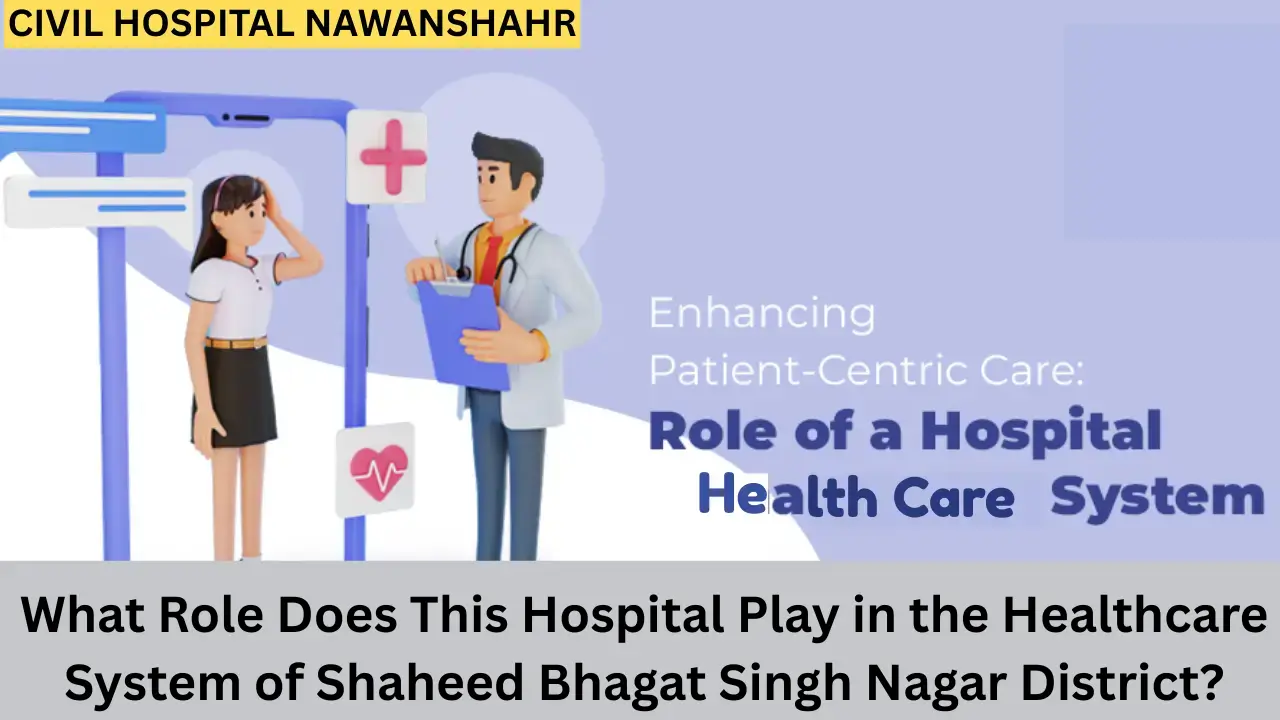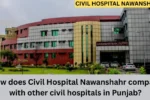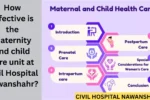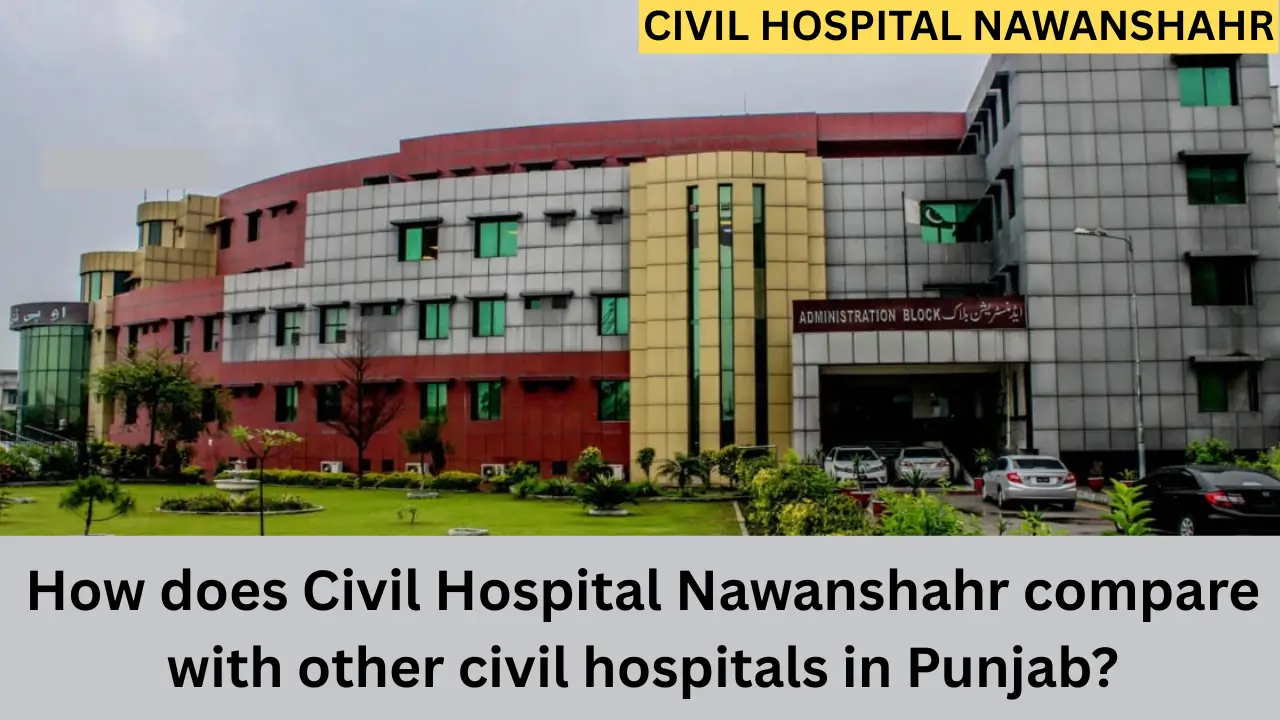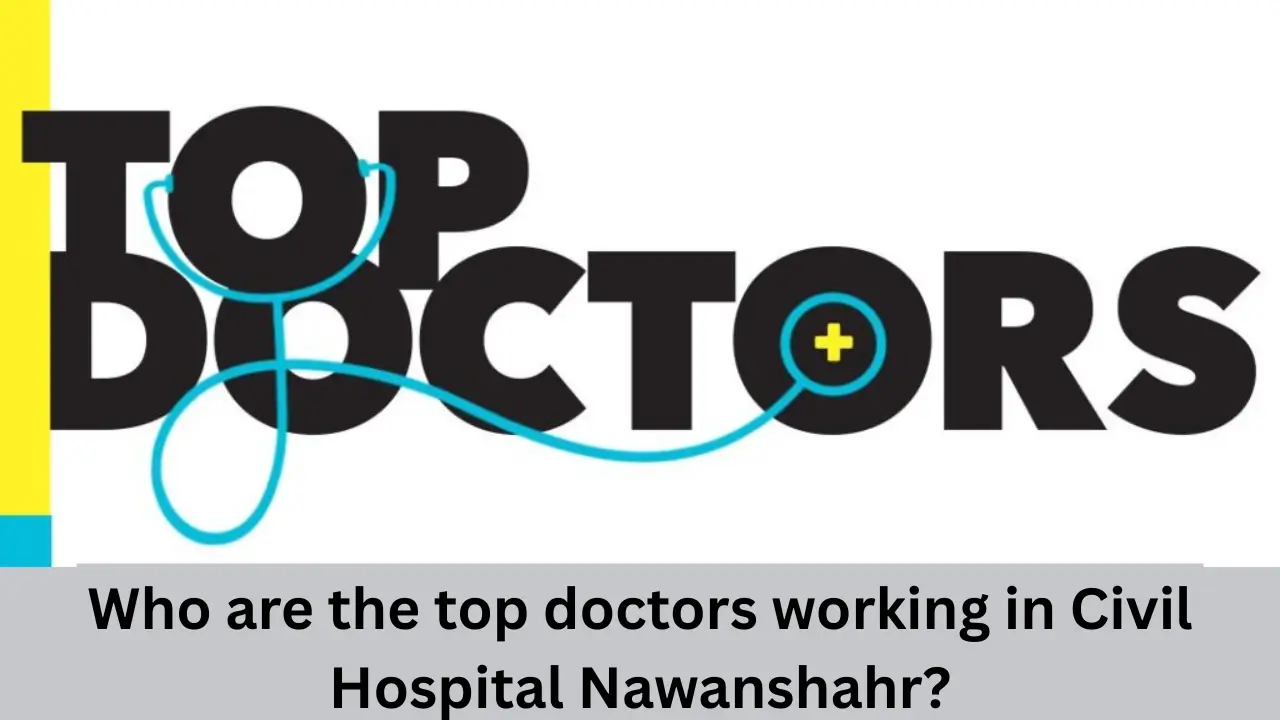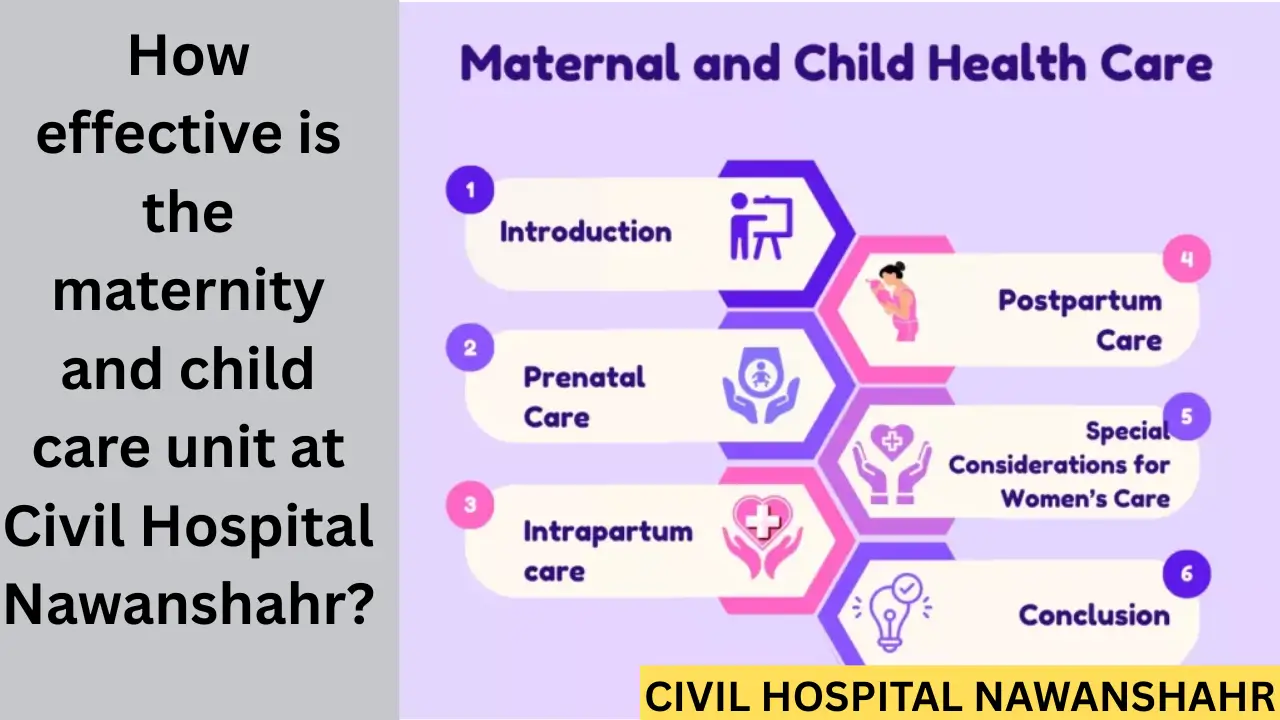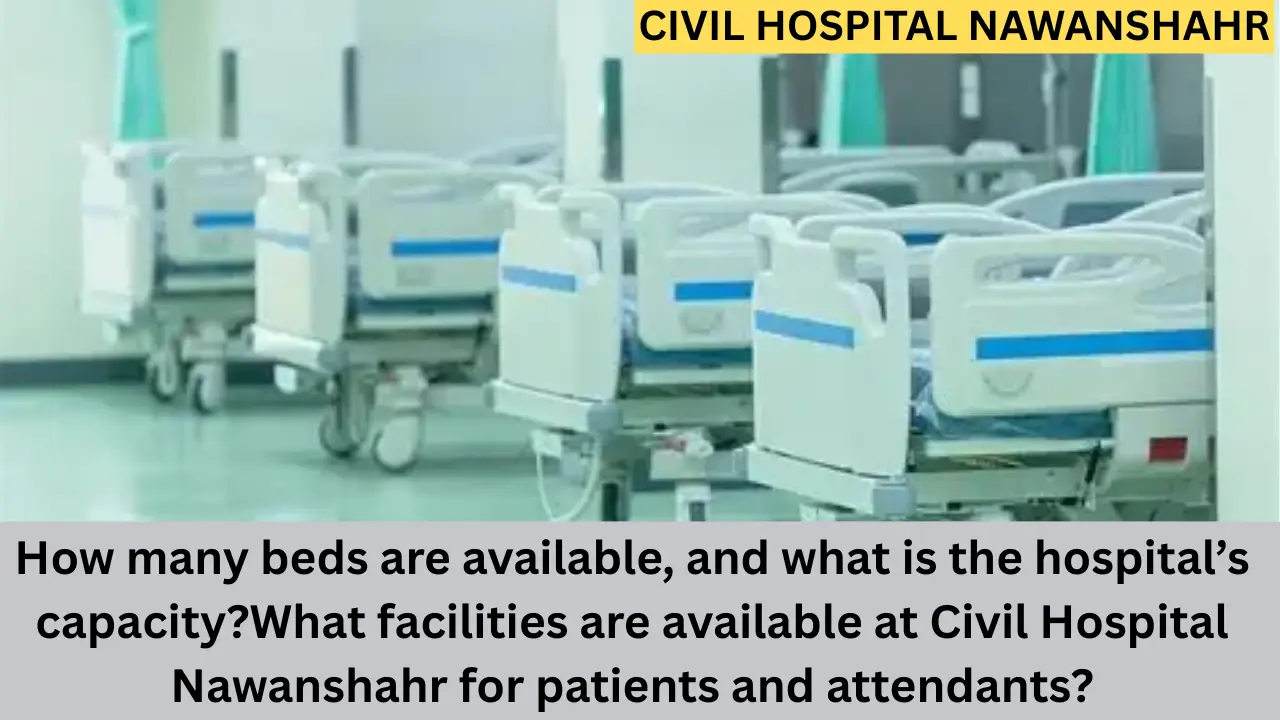District hospitals play a pivotal role in the healthcare delivery system of any region, acting as the primary referral centers for secondary care and providing comprehensive medical services to the population.
In Shaheed Bhagat Singh Nagar district of Punjab, the District Hospital (DH) serves as a critical health infrastructure hub that supports the health needs of the district’s residents. This article explores the significant roles played by the District Hospital in Shaheed Bhagat Singh Nagar within the district’s healthcare system and how it impacts public health outcomes.
Overview
The District Hospital in Shaheed Bhagat Singh Nagar is situated on Chandigarh road near IVY private hospital and has been operational in a newly constructed government building since August 2014. With a capacity of 100 beds, this hospital caters to a broad spectrum of healthcare needs ranging from general medicine to emergency care.
Facilities and Infrastructure
- 100 bedded government hospital with basic amenities such as consistent electricity, 24×7 water supply, and power backup.
- Separate toilets for males and females, blood storage facilities, and a homeopathic clinic onsite.
- Specialized units for malaria and tuberculosis (TB).
- Staff quarters available for medical officers and nurses, indicating residential facilities to support staff retention and availability.
Medical Services Offered
The hospital offers round-the-clock services in:
- General medicine
- Emergency services including trauma care
- Obstetrics and gynecology including C-section deliveries and emergency obstetric care
Daytime services also include:
- Radiology and diagnostic imaging
- Dermatology, orthopedics, ENT, ophthalmology
- Psychiatry and surgery (major surgeries)
- Abortion care covering 1st and 2nd trimester
- Adolescent reproductive health clinics (ARSH)
- AYUSH medicine services (homeopathy, Ayurveda, etc.)
- Dialysis services
However, some tertiary services like cardiology, pediatrics, endocrinology, and gastroenterology are unavailable due to a shortage of specialists.
Role in the Healthcare System
The District Hospital is an essential part of a network of 172 health institutions in the district, including sub-divisional hospitals, community health centers (CHCs), primary health centers (PHCs), rural dispensaries, and sub-centers.
Key Roles
- Primary Referral Center: Acts as the referral center for CHCs, PHCs, and dispensaries in the district, managing complicated cases that require specialized medical attention, surgeries, and diagnostics.
- Emergency Care and Maternal Health: Provides 24×7 obstetric and emergency care including C-section deliveries, catering to the reproductive health of women in the district.
- Diagnostic and Laboratory Services: Facilitates significant diagnostic activity with thousands of lab tests, ultrasounds, X-rays, and ECGs performed annually, supporting early diagnosis and treatment.
- Public Health Initiatives: Hosts specialized units for malaria and tuberculosis, essential for disease control and public health surveillance.
- Support for AYUSH and Traditional Medicine: Housing an AYUSH clinic services the local population preferring alternative medicine alongside allopathic care.
- Educational and Training Hub: Provides practical training and experience for medical staff and allied health workers within the district.
Contribution to Public Health and Community Well-being
Healthcare Access and Delivery
- The hospital’s capacity and round-the-clock services ensure that a large part of the district population has timely access to essential healthcare.
- Supports around 13% of institutional deliveries in the district, a critical indicator of maternal health progress.
- Availability of diagnostics onsite improves prompt treatment and reduces the need for travel to distant facilities.
Addressing Healthcare Gaps
- The hospital’s presence fills critical gaps in secondary level care in the district, especially for trauma care, emergency surgical procedures, and specialized diagnostic services.
- It acts as a backbone for emergency obstetric care, reducing maternal mortality risks.
- Blood storage facility aids in timely transfusions during emergencies.
Healthcare Network in Shaheed Bhagat Singh Nagar District
The district’s health infrastructure network is supported by the District Hospital and includes:
| Type of Facility | Number in District | Key Role |
|---|---|---|
| District Hospital (DH) | 1 | Tertiary care, specialist services, emergency care |
| Sub Divisional Hospital (SDH) | 1 | Secondary care level services |
| Community Health Centers (CHCs) | 4 | Primary level referral and maternal care |
| 24×7 Primary Health Centers | 3 | Round-the-clock primary healthcare |
| Primary Health Centers (PHCs) | 15 | Basic healthcare and normal deliveries |
| Subsidiary Health Centres | 47 | Outpatient care, disease surveillance |
| Sub-centers (SCs) | 95 | Frontline primary care and immunizations |
Latest Developments and Updates
- The hospital operates in a newly constructed government facility since 2014, ensuring modern infrastructure.
- Newly introduced services include dialysis and adolescent reproductive health clinics, expanding healthcare access.
- Focus on enhancing cleanliness and waste segregation as part of improving hospital hygiene.
- Ongoing challenges include availability of specialist doctors in cardiology, pediatrics, endocrinology, and gastroenterology, which are crucial for comprehensive tertiary care.
- The hospital is part of government health insurance schemes like Ayushman Bharat, increasing affordability and accessibility for economically disadvantaged patients.
Challenges and Future Directions
- One key challenge is the specialist doctor shortage in critical departments such as cardiology and pediatrics, limiting the hospital’s capacity to provide full tertiary care.
- Expanding immunization, diagnostic, and emergency services to cover the entire district effectively.
- Enhancing the integration of AYUSH and allopathic services to offer holistic care.
- Investing in technology and telemedicine can improve specialist access and reduce patient transfer needs.
- Improving healthcare awareness and outreach to increase institutional deliveries and routine health checkups in remote parts of the district.
Conclusion
The District Hospital in Shaheed Bhagat Singh Nagar plays a crucial role as the cornerstone of the district’s healthcare system. Serving as the main tertiary and referral hospital, it provides essential medical, surgical, emergency, and maternal health services to the district’s population. Despite challenges like specialist shortages, the hospital continuously updates its services and infrastructure to meet growing healthcare needs, thus contributing significantly to the overall health and well-being of the community.
